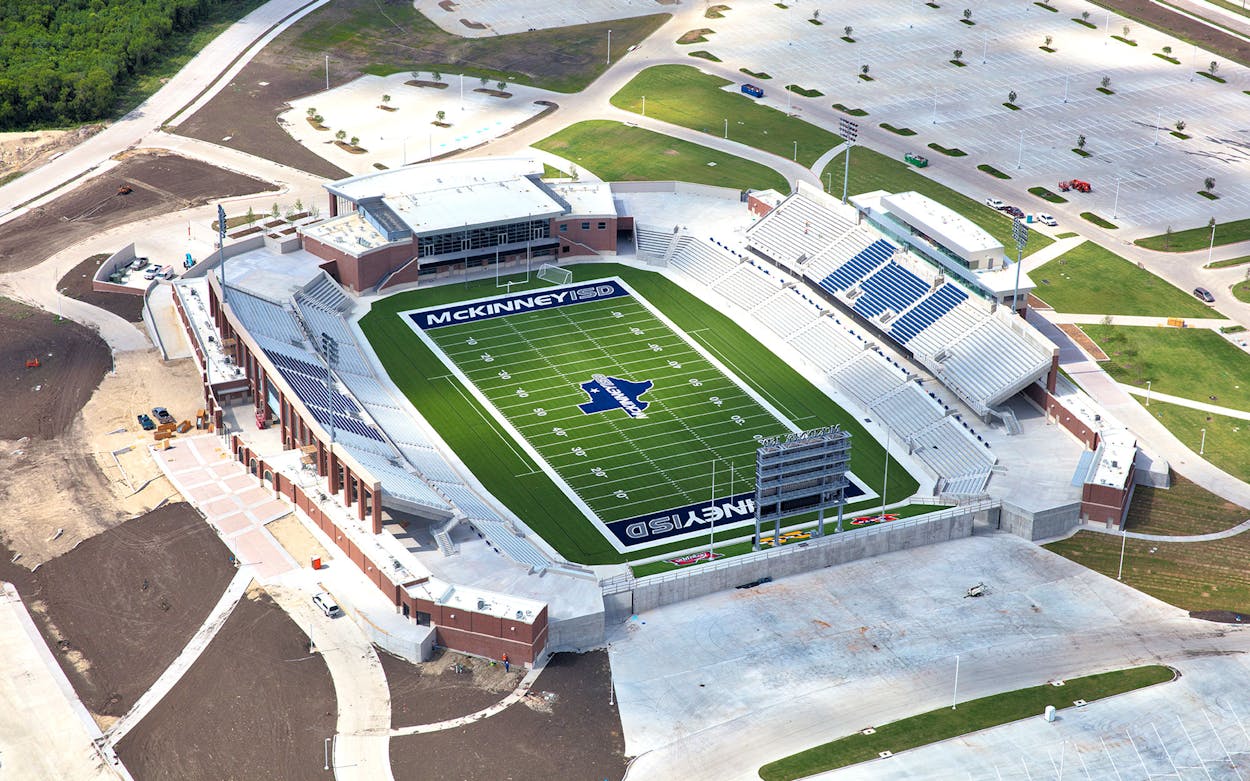In 2016, voters in McKinney approved a $220 million bond package that included $69.9 million for a high school football stadium. The project broke ground late that year, with an expected opening in time for the upcoming fall season. The expense of the stadium surpassed that in Allen, McKinney’s neighbor down Route 75, which, in 2012, opened what at the time was the most expensive high school football stadium in the country. But like the stadium in Allen, the McKinney construction has been derailed by cracks.
Allen’s 18,000-seat facility cost nearly $60 million and was constructed to host the Allen Eagles’ state championship teams in all their glory. And it did: The Eagles won back-to-back state championships in 2012 and 2013.
Then came the cracks. Before the 2014 season, the stadium was closed after structural flaws caused cracks as large as 3/4 of an inch in the concourse, press box, and retaining wall, forcing the team to play its home games that year in nearby Plano. The stadium didn’t reopen until graduation the following June.
Eagle Stadium made international headlines at the time it was built, but it wasn’t the last suburban Texas stadium with an eight-figure price tag. Last fall, the Houston suburb of Katy unveiled its $70 million stadium, and in 2016, voters in McKinney, not to be outdone, approved their own massive stadium project. Whether that stadium will be ready for its fall opening is now a big question—because, like in Allen, staff at McKinney ISD identified cracks during the construction process.
The Dallas Morning News reports that Nelson Forensics, which also identified the source of the cracks in Allen, is investigating the issue in McKinney. It’s normal for concrete to crack as it contracts and dries, but photos published by the paper appear to depict cracks large enough to cause problems. As of yet, it’s unclear if that’ll have an impact on the stadium’s opening.
Because the McKinney stadium isn’t yet complete, available solutions could be faster and cheaper than the solutions in Allen. There, the cost of repairs was inflated by 1,000 percent because the completed architecture had to be removed and replaced, as contractor Pogue Construction and architect PBK told the Morning News in 2015. Neither of the companies involved in the McKinney stadium—international architectural firm Stantec and Florida-based contractor Manhattan Construction Group—spoke to the Morning News for its story on the stadium, but it’s worth noting that in Allen, the firms responsible for the stadium’s construction paid for the repairs.
Who precisely will foot the bill for repairs in McKinney remains a mystery. In the meantime, the McKinney Lions season starts in a little over three months. We’ll just have to wait and see where they end up playing their games.
- More About:
- Style & Design
- Sports
- Football
- Architecture








